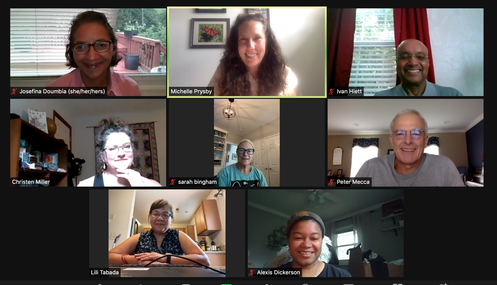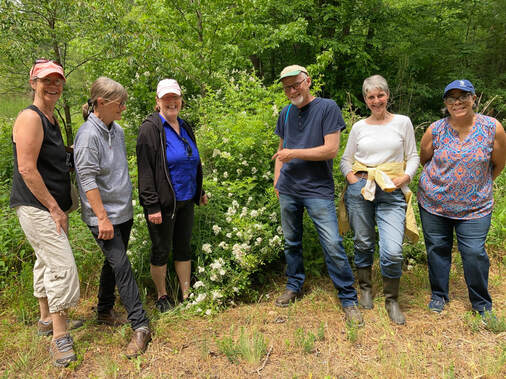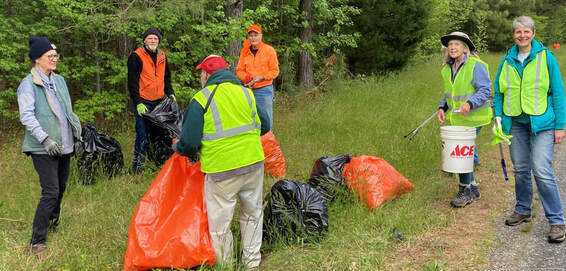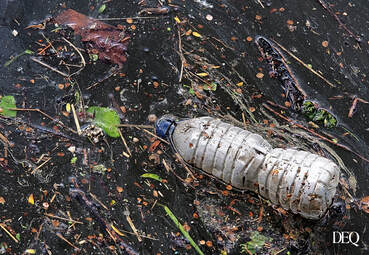Diversity & Inclusion Working Group Update
 A subset of the VMN Diversity & Inclusion Working Group in an online meeting, August 2021.
A subset of the VMN Diversity & Inclusion Working Group in an online meeting, August 2021.
One of our major projects this year in the VMN state program office has been to look at diversity and inclusion in the VMN program and to identify action items that will help us increase both. With this update, our team wants to give our VMN community a sense for what we have done so far and our plans for this fall.
The work has been supported by a grant from the Virginia Environmental Endowment and by the many individuals who donated to the Virginia Tech Foundation in support of the VMN program.
Our Diversity and Inclusion Team
In late 2020, we put out a call for VMN volunteers to fill three roles: Diversity and Inclusion Working Group members, Diversity and Inclusion Feedback Team members, and Diversity and Inclusion Chapter Champions. We received applications from more than 100 people for these roles from 27 different VMN chapters, which reinforced for us that this effort is something that is of interest to many of our volunteers.
The Working Group is comprised of 16 individuals from 13 chapters and two sponsoring agencies. Together, the group brings a diversity of perspectives from different lived experiences as well as demographic diversity, with a variety of races, ethnicities, genders, abilities, sexual orientations, and ages. We have been meeting together since February to outline our goals and objectives, discuss what diversity means to the VMN program, and outline a list of suggested action items. I am personally very grateful for the time, energy, and thought that these volunteers have contributed. Although what we defined as the official Working Group member role is wrapping up soon, most of the group members have indicated that they would like to stay involved over the longer term to help implement some of the actions.
Members of the Working Group:
- Alexis Dickerson, Arlington Regional Chapter
- Christen Miller, Pocahontas Chapter and Department of Conservation and Recreation
- Ivan Hiett, Southwestern Piedmont Chapter
- Jennifer Ramos Hoover, Riverine Chapter
- Josefina Doumbia, Fairfax Chapter
- Kevin Divins, Pocahontas Chapter
- Krista Weatherford, Pocahontas Chapter
- Laure Wallace, Shenandoah Chapter
- Lauren Brennan, Peninsula Chapter
- Lili Tabada, Central Rappahannock Chapter
- Linda Eanes, Central Piedmont Chapter and Virginia Cooperative Extension
- Peter Mecca, Fairfax Chapter
- Randi Dandrea, Historic Southside Chapter
- Sarah Bingham, Rivanna Chapter
- Shea Megale, Merrimac Farm Chapter
- Susan Sims, Banshee Reeks Chapter
I am also grateful to the Feedback Team, a larger group of volunteers who have provided feedback on the goals and action items. These individuals were honest and insightful in their feedback. The Working Group read through all the written comments we received and have been working on incorporating it into the action items as much as possible. We are also working on getting some additional feedback from key members of our sponsoring agencies.
We have not yet ‘activated’ the Chapter Champions, as our focus so far has been on developing the action items. This fall, we will be looking at who has volunteered for that role, recruiting additional volunteers if needed, and talking with all of them about how they can help carry the actions forward in their chapter.
Although we had these three designated roles outlined this year, I think there is a role for every VMN volunteer in this effort. VMN volunteers make more than 100,000 contacts each year through the educational programs they provide in their communities. Sharing knowledge and enthusiasm for nature and inspiring people to care about natural resource conservation is a critical and core part of what our volunteers do, and our efforts will be most effective when they are inclusive and welcoming to diverse audiences. In this way, all of our volunteers are part of the team.
What’s Ahead?
We are planning a Diversity and Inclusion in Natural Resources webinar series for this fall (dates to be determined.) Some of these will have external presenters providing perspectives on different approaches for engaging with diverse audiences in natural resource programs. As one webinar in this series, members of the Working Group will present why diversity and inclusion are important and worthy of attention in the VMN program, describe the action items we have developed (which will be posted to the VMN website by that time), and lead a discussion on how we can implement them together over time. These action items are not mandatory nor prescriptive, but rather a vetted list of possibilities. Some are state-level actions and some are chapter-level, but our chapters differ in terms of their capacities and in terms of the populations of their communities, so there is no one-size-fits-all approach. We also anticipate that over time, volunteers may share additional actions that have been effective for them, and we can continue to add these to the list.
Watch for announcements of these events via email!
Future work will include identifying benchmarks to measure our success in achieving our objectives, seeking resources where needed to help implement actions, and continuing to communicate with and support our volunteers and chapters as they work locally to increase diversity and inclusion in their programming.
Diversity & Inclusion Working Group Update Read Post »



